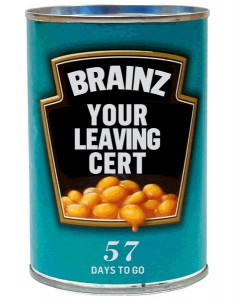 Some students have trouble getting their heads around the difference between a short story and a personal essay. If you write a personal essay then YOU aged 17 or 18, doing the Leaving Certificate, are writing about yourself. You can exaggerate, even make stuff up, but ultimately you are tied to offering the perspective of an Irish teenager. If you write a short story, your main character can be anyone – a homeless person, princess, pilot, animal, drug addict, sportsperson, banshee, baby in the womb, spy, slave, vampire, alien or angel. So personal essays are where you write about yourself. Short stories are fictional and can be set anywhere, anytime and be about anyone. In summary:
Some students have trouble getting their heads around the difference between a short story and a personal essay. If you write a personal essay then YOU aged 17 or 18, doing the Leaving Certificate, are writing about yourself. You can exaggerate, even make stuff up, but ultimately you are tied to offering the perspective of an Irish teenager. If you write a short story, your main character can be anyone – a homeless person, princess, pilot, animal, drug addict, sportsperson, banshee, baby in the womb, spy, slave, vampire, alien or angel. So personal essays are where you write about yourself. Short stories are fictional and can be set anywhere, anytime and be about anyone. In summary:
- A short story has a plot, setting and fictional characters!
- The style of writing is DESCRIPTIVE
- A short story could be ONE EPISODE of a TV show.
- A personal essay is a series of related ideas (or anecdotes) which reveal your personality, opinions, memories & feelings.
- The style of writing is up to you – you can use descriptive writing in one paragraph, rhetorical questions & lists in another, humour and exaggeration in another.
- Each paragraph uses ONE core idea.
- A personal essay COULD NOT be made into a TV show.
When writing a personal essay your personality must take centre stage – your attitudes, feelings, hopes, desires and beliefs are revealed. The quirkier the better – the last thing you want is to come across as the same as everyone else!
Follow the six rules of essay writing. Plan in advance, organise your ideas. Use some of the following techniques:
- Quotes from bands/singers, writers, philospohers, friends, calendars!
- Anecdotes from your past. Of course you can always describe an event that happened to someone else and pretend it happened to you.
- Descriptive style so the reader is drawn into the experiences you evoke.
- Reflection on your experiences/beliefs/attitudes – show an awareness of how you have become the person you are.
- Imagination – you are free to wander off on a tangent, letting your thoughts flow naturally…as long as you eventually return to the point.
- Humour – be as funny, sarcastic and brutally honest as you are in real life. It’s so refreshing because students tend to be puh puh puh puh puh puh puh puh pokerfaced and overly serious in the exam. (Then you meet them in real life and they’re a total scream but didn’t manage to get this across in their writing. So sad ;-(
- Hyperbole – take the truth & exagerate it. Make your writing dramatic.
- Observations about life, love, lucozade and lemonade. Here is your chance to muse about everything.
- Identify problems & offer solutions. Don’t be a Moaning Myrtle!
Here’a another discussion of the personal essay for a different perspective on it:
http://litreactor.com/columns/up-close-and-personal-a-personality-expose-of-the-personal-essay








